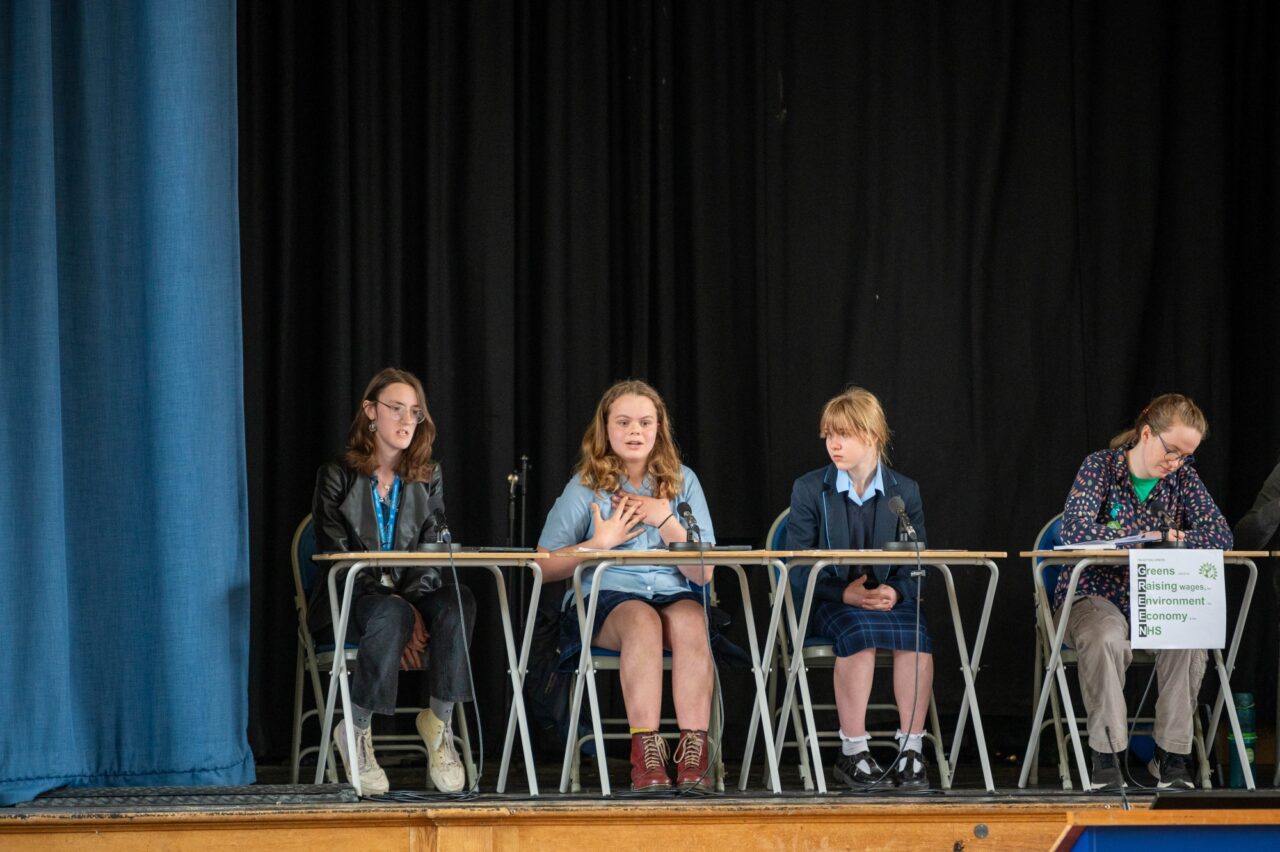My summer course in Segovia
My summer course in Segovia: discussing how to teach Spanish vocabulary
El aprendizaje de lenguas extranjeras nos permite adquirir nuevas almas – Ennio (poeta latino) – learning foreign languages allows us to acquire new souls – Ennio (Latin poet)
This Summer I was lucky enough to be one of 30 teachers from all over the world to be awarded a grant by the Spanish Ministry of Education to spend a week in Segovia, Spain, where UNED professors Alicia San Mateo Valdehíta, Fernando Sánchez Díaz and María Luisa Veuthey Martínez led three separate sessions on vocabulary acquisition.
All sessions were collaborative and we started the first one with the question: what vocabulary should we teach and in what order? We all agreed that teaching vocabulary should be done according to themes, as using authentic texts can at times prove difficult to use and can have a detrimental effect on motivation. As well as this, we recognised the importance of having a plan, so as to ensure that words are gradually introduced and revisited on a regular basis to be stored into the long-term memory. Professor Alicia San Mateo Valdheíta then proceeded to show us some examples of corpora of texts, the CREA – Real Academia Española and the Corpes XXI, two databases that gather examples of words in contexts. She argued that these would be invaluable in our teaching, because they offer real examples of how the language is used both in writing and speaking and because they also explore in what Hispanic country the word is used. I would argue that, with 22 lessons a week to plan and teach, using corpora of texts can be a very time-consuming process, given the fact that teachers will also need to select the appropriate examples that match their learners’ level. However, I believe they can still be used although maybe not that frequently: an example would be with the expression “matrimonio homosexual” (homosexual marriage), when starting the topic of “La igualdad de los derechos” (equality of rights, a Y12 Spanish A Level topic) to explore how the frequency of the expression has changed in the last few years in the Spanish-speaking world.
During the second day we discussed the advantages and disadvantages of different vocabulary activities and tasks from a variety of textbooks by Spanish publishers. This was a very interesting activity and we were all able to reflect on what good progression is, how to expand vocabulary and the importance of presenting new vocabulary as a chunk, rather than a single unit. Finally, we explored different vocabulary learning websites and apps, such as Quizlet, Duolingo, StudyStack and many more. Most teachers were already familiar with those but perhaps had never reflected on their uses and limitations.
The second session was led by Professor Fernando Sánchez Díaz and focused on the gap in taboo language in ELE (español lengua extranjera) teaching. We started the session with a Google Form on Spanish dialects across the Hispanic world. It was very interesting to see the reaction of most teachers, who felt nervous and worried about the possibility of scoring poorly and their score being shared on the screen in front of everyone. Prof Sánchez Díaz reassured us that the test was low-stakes and that it only served the purpose to ascertain prior knowledge.
According to the latest Cervantes Institute survey, almost 493 million people spoke Spanish as their mother tongue in 2021: the second mother tongue in the world for number of native speakers, after Mandarin Chinese. As well as this, 24 million students were studying Spanish as a foreign language in 2021. It is estimated that the number of Spanish speakers will continue to grow until 2068, when there will be more than 726 million people who will be able to speak the language. In 2060, the United States of America will have the second largest number of Spanish speakers in the world, after Mexico. Spanish is the official language in 21 countries and, for this reason, differs very much depending on the country where it is spoken. The Hispanic world can be divided into eight main Spanish dialect areas: three in Spain (Andalusian, Canarian, Castilian) and five in America (Caribbean, Mexican-Central America, Andean, Chilean and Rioplatense). The fundamental linguistic elements that contribute to effective communication, from a sociocultural perspective, are taboo language (including euphemisms and dysphemisms) and verbal courtesy. Some examples of hispanoamerican verbal courtesy according to Andión & Casado, 2014, are: an abundance of affectionate diminutive nouns and nicknames (mi vida, cielo, corazón, cariño, precioso). Hispanoamericans also use fewer interruptions and prefer to wait until the person talking has finished their utterance.
During this second session, we spent a considerable amount of time exploring “Dialectal false cognates”, that is to say words that are written in the same way in American Spanish and Spanish from Spain but that are used differently (i.e. the verb coger in Spain is very frequently used to mean “to take”, coger un taxi = to take a taxi, whilst in South America can have sexual connotations and is rarely used with means of transport). Professor Fernando Sánchez Díaz showed our cohort how to use the Diccionario de Americanismos to ascertain whether a word can have a different meaning in another Spanish-speaking country. Dialectal false cognates are often considered “taboo” and we hardly ever refer to them or teach them explicitly in the classroom. We analysed different textbooks to see if any addressed this area and we realised there is a lack of materials. We also realised that insults are never addressed in class as it is a sensitive topic and a difficult one to tackle with students, especially in their teenage years. We all agreed that discussing insults in class does not mean encouraging students to use them but rather raising awareness: giving them the tools to deal with them and avoid difficult situations. Perhaps this is best done with older students, who are keen to spend some time in a Spanish-speaking country, through some well-thought through resources, such as the ones devised by Vicente in his blog Spanish with Vicente.
Our last session was less controversial than the previous one and more easily transferable to our daily language teaching at Headington School, as it was all about the use of idiomatic expressions and onomatopoeia. We discovered a superb resource that I am keen to use once back in the classroom, called Refranero Multilingüe. This website can be used to explore the etymology and the translation of Spanish idiomatic expressions.
In addition, we analysed the teaching and learning of onomatopoeia; this has a big presence in languages around the world, from English to Spanish to Korean and Japanese. In fact onomatopoeia is very important in the Japanese language, so much so that there are more than 1,000 examples! It seems that they have several to express pains and sickness too. If you are interested you can see some examples here.
As there were teachers from 25 different countries, we were all keen to compare onomatopoeia and idiomatic expressions in our mother tongue. My favourite part of this last session was acting as students: Professor María Luisa Veuthey Martínez divided us into small groups and gave each group a strip of paper with an idiomatic expression in Spanish. She then also gave each group another strip of paper with three possible meanings; all groups had to circulate around the room to find the correct definition of the idiomatic expression they had been given. This activity was then followed by another one whereby each group was given the etymology of the expression to be read out loud and the group with the equivalent expression had to stand up and shout the expression out loud. I will definitely reuse this activity as idiomatic expressions are one of the main criteria for success at both Spanish GCSE and A Level.
Para resumir or to sum up as we would say in English, the course in Segovia has been an amazing opportunity to compare different Spanish vocabulary teaching practices across the world. Moreover, it has enabled me to reflect on what vocabulary I want to focus on actively in class and what expressions I simply want my students to be passively aware of. I have been immersed in the Spanish language and culture for a week, I have learnt some new idiomatic expressions myself that I will make sure to pass onto my students and I have been privileged enough to visit the beautiful UNESCO heritage site of Segovia. Last but not least, I have been given the opportunity to establish links with other teachers from different countries, with whom I hope to collaborate in the future.
iHasta luego por ahora!



